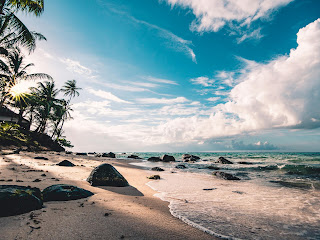Traveling is an enriching experience, but it can sometimes be expensive, especially when it comes to accommodations. However, with a bit of savvy and some insider tips, you can find affordable hotels that won’t break the bank. Here’s how to make your hotel search both cost-effective and enjoyable:
1. Travel Off-Peak
Traveling during off-peak seasons or weekdays can significantly reduce hotel costs. Prices tend to be lower when demand is not as high, and you may also benefit from less crowded tourist spots.
2. Leverage Online Travel Agencies (OTAs)
Online Travel Agencies like Booking.com, Expedia, and Agoda often offer competitive rates and exclusive deals. Use their filters to find hotels within your budget, and take advantage of their price comparison tools. Additionally, signing up for their newsletters can provide access to special discounts and flash sales.
https://www.booking.com https://www.expedia.fr/? https://www.agoda.com/
3. Utilize Hotel Comparison Websites
Websites such as Trivago, Kayak, and HotelsCombined aggregate results from multiple OTAs, allowing you to compare prices at a glance. These platforms often include user reviews and ratings, helping you make an informed decision based on both cost and quality.
https://www.trivago.in https://www.kayak.co.in
4. Book Directly Through Hotel Websites
Sometimes, booking directly through a hotel's website can yield better deals than OTAs. Hotels save on commission fees when you book directly and might offer you perks like free breakfast, room upgrades, or additional discounts.
5. Consider Alternative Accommodations
If traditional hotels are out of your budget, consider alternatives like hostels, guesthouses, or vacation rentals. Platforms like Airbnb, Hostelworld, and Couchsurfing offer affordable options that can also provide unique and culturally immersive experiences.
https://www.hostelworld.com https://www.couchsurfing.com/
6. Use Last-Minute Booking Apps
Apps like HotelTonight and Last Minute Travel specialize in finding discounted hotel rooms at the last minute. These can be great for spontaneous trips or if you’re flexible with your accommodation plans.
7. Negotiate Directly with Hotels
Don’t be afraid to call hotels directly and ask for a better rate. Mention if you found a cheaper rate online or if you’re staying for an extended period. Sometimes, hotels are willing to negotiate to secure your booking.
8. Take Advantage of Loyalty Programs
Join hotel loyalty programs, such as Marriott Bonvoy, Hilton Honors, or IHG Rewards. These programs offer members exclusive discounts, points for free stays, and other perks that can save you money in the long run.
9. Consider Package Deals
Look for package deals that bundle flights, hotels, and even car rentals. Websites like Expedia, Orbitz, and Travelzoo often provide significant savings when you book multiple aspects of your trip together.
https://us-en.flightnetwork.com https://www.travelzoo.com/
10. Explore Regional and Local Hotels
International hotel chains are not always the cheapest option. Explore regional and locally-owned hotels that may offer lower rates and a more authentic experience.
11. Read Reviews and Ratings
Before booking, read reviews on TripAdvisor, Yelp, or Google. Honest feedback from previous guests can help you avoid unpleasant surprises and ensure that the hotel’s affordability does not come at the cost of comfort and cleanliness.
12. Stay Updated on Travel Deals
Follow travel deal websites and social media accounts like Scott’s Cheap Flights, The Points Guy, and Secret Flying. They often share time-sensitive deals and discount codes that can significantly reduce your hotel costs.
Conclusion
Finding affordable hotels requires a bit of research, but the savings can greatly enhance your travel experience. By leveraging online tools, staying informed about deals, and considering alternative accommodations, you can enjoy a comfortable stay without spending excess money.
HAPPY TRAVELS!😸
















